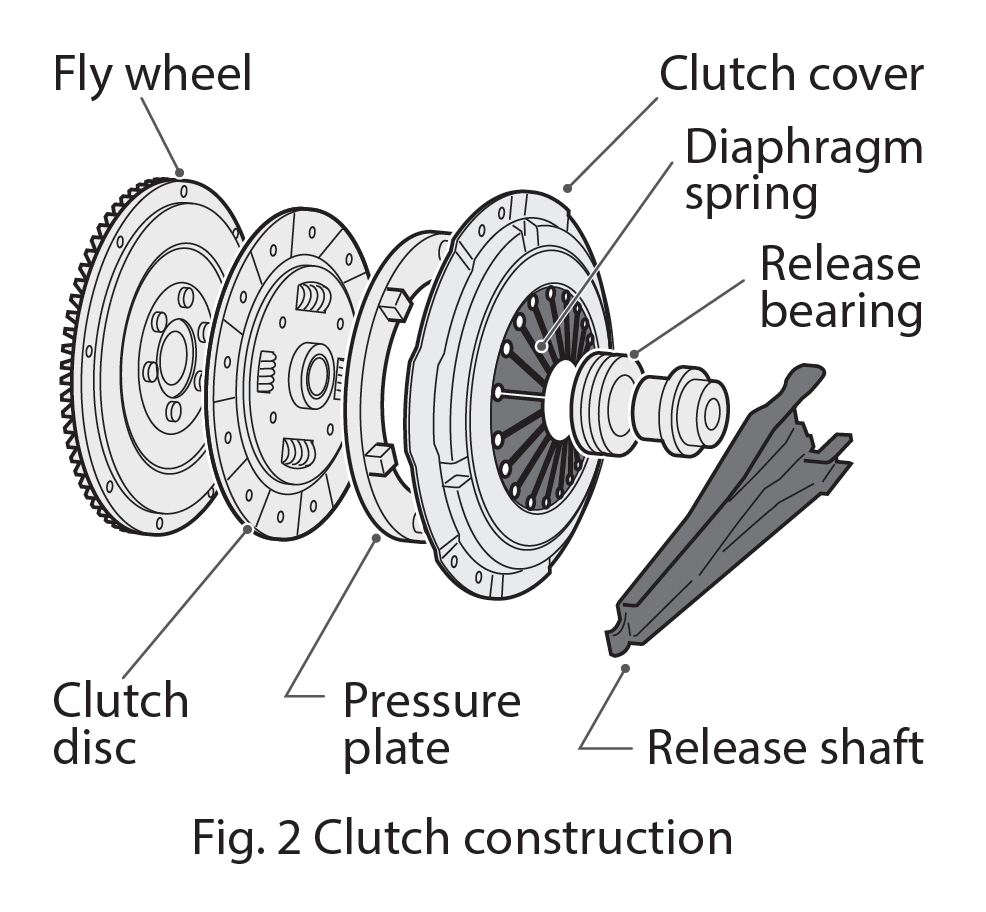Generally speaking and avoiding the use of too much detail and jargon, the clutch pedal pushes on an adjustable length rod, which in-turn pushes on the clutch master cylinder, which in-turn uses fluid to transmit power to the slave cylinder, which in-turn pushes on the transmission clutch fork, which pushes against a bearing, which pushes on the springs, which in-turn disengages the clutch disc from the engine flywheel. The bearing is only necessary because the springs on the clutch cover spring diaphram, are spinning... where as the clutch release fork of course isn't.
While your foot is responsible for generating the mechanical force needed to separate the transmission from the engine, the clutch cover spring diaphram is responsible for the return force. If those springs break loose or are damaged, this is nearly always accompanied by some very unusual noises that you cannot ignore.
http://d1hw7lidb7g0nl.cloudfront.ne.../01/Screen-Shot-2017-02-02-at-10.00.46-AM.png
https://i1.wp.com/mechstuff.com/wp-content/uploads/2017/08/ezgif.com-gif-maker.gif?resize=600,338
https://qph.fs.quoracdn.net/main-qimg-3f100a83b3bdc9647a533871c21f3df2-c
Since you haven't mentioned any such noises, and such failures are relatively rare, it is more likely that the intermittent failure is with some part of the clutch hydraulic system.
First thing you'll want to do is check the fluid level for the clutch hydraulics. The fluid reservoir is somewhat shared by the brake hydraulics. For safety, that reservoir is compartmentalized. Shine a STRONG light on that reservoir and check to see whether the fluid, on the clutch side, is low or drained. The clutch master cylinder can leak internally or externally. The slave cylinder can only leak externally. So depending on whether you're losing any fluid, you can get an idea on where you might be able to first cast your scrutinous eye.


